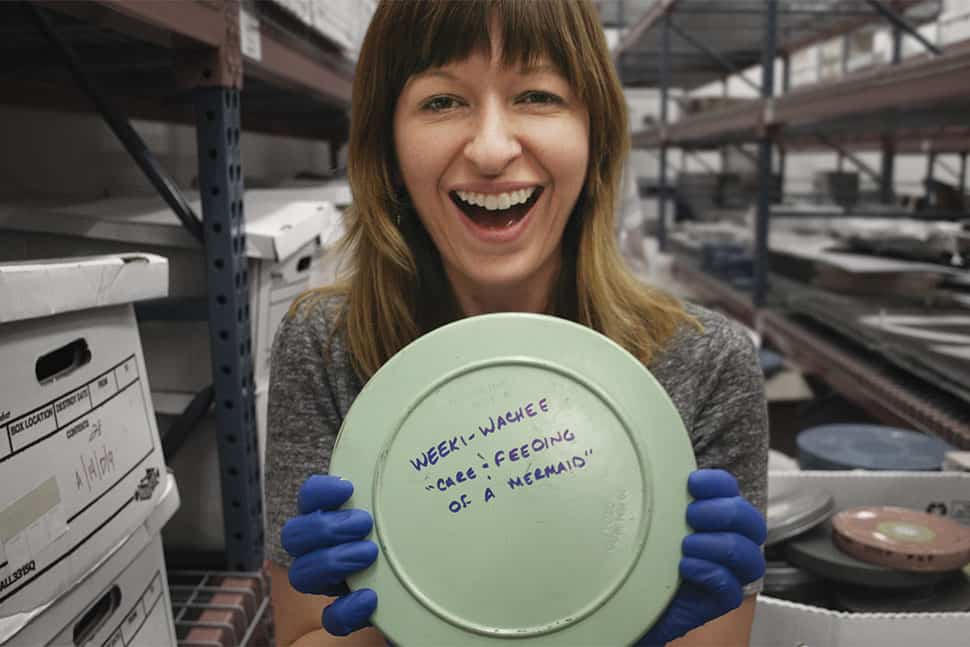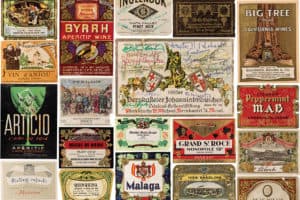
The living voice is that which sways the soul,” wrote Roman author Pliny the Younger in the 1st century CE. Indeed, the audible voice is an essential component of an interview. Programs such as StoryCorps and other oral history programs preserve the voices that convey the memories of participants in important events of earlier times.
Libraries have been collecting audio and video for many years, and audiovisual librarians well know the value of voices and moving images. Within the profession itself, Technical Services Manager A. Arro Smith—author of Capturing Our Stories: An Oral History of Librarianship in Transition (ALA Editions, 2017)—has been chronicling the oral histories of retired librarians on a supplementary website. Smith is working with former American Library Association (ALA) President Loriene Roy, in partnership with the University of Texas at Austin School of Information, on this repository.
Many audiovisual collections are considered at risk. Years of data could be lost through deterioration of the original media unless it can be transferred to more durable digital formats. Libraries and other cultural institutions are rediscovering the value of these collections and are taking steps to preserve the sounds and images they contain.
For example, the Preservation and Reformatting Section of the Association for Library Collections and Technical Services (ALCTS) completed its inaugural Preservation in Action (PIA) project on June 24 during the 2016 ALA Annual Conference. As part of the project, librarian volunteers worked with the Orange County Regional History Center in Orlando, Florida, to rehouse its film collection in archival enclosures. Photo Archivist Whitney Broadaway was the onsite staffer who assisted the working group in organizing the event. The experience gave those at the center a hands-on opportunity to learn about audiovisual preservation while helping to preserve its collections. Siobhan Hagan, a member of the Association of Moving Image Archivists (AMIA), also assisted by providing onsite training and handouts.
Another PIA service project is scheduled for the 2017 ALA Annual Conference in Chicago. Such service projects allow ALA members to learn from their preservation colleagues while also assisting institutions in the conference city.
Education and advocacy
The need for audiovisual preservation both for our library collections and the communities we serve is becoming an important area for education and advocacy. The Washington, D.C.–based Council on Library and Information Resources (CLIR) has received a grant from the Andrew W. Mellon Foundation to assist in this needed action. The program, in partnership with the Northeast Document Conservation Center (NEDCC), will fund the digitization of audio and video materials of high scholarly value that are at a high risk of loss. CLIR and NEDCC are running four competitions between January 2017 and September 2018, awarding a total of $2.3 million to successful applicants to cover the direct costs of preserving these materials.
Many other companies also provide high-quality reformatting services. Here are some steps to consider when planning your audiovisual preservation project.
Know what you have. This is an important first step. It often takes time to locate all the small collections that over the years have been sequestered in multiple places within an institution. Several useful tools are available for surveying audiovisual collections. The California State Library’s California Preservation Program has developed a needs assessment instrument, CALIPR, that is freely available to libraries, even outside California. Another useful tool is the Preservation Self-Assessment Program administered by the University of Illinois at Urbana-Champaign Library, which helps collection managers evaluate their options for preservation of everything from paper documents to film and audio materials, as well as ceramic, glass, stone, and metal objects.
Determine your priorities and set goals. Does your assessment tool show that reformatting of media is needed? Is rehousing and better storage another option? Is there a level of deterioration that makes some materials more at risk than others? Are your institutional resources sufficient for the work or will you need to develop a grant for funding? If a grant is necessary, should you reach out to institutions with similar collections to develop a joint grant proposal? Do you have the expertise onsite to develop protocols and procedures for the best outcomes, or would it be better to conduct a joint project to maximize expertise?
Preserving audiovisual materials is comparable to microfilming projects that in the past were done cooperatively to ensure greater value across several institutions. The same might be true for media collections. Cooperating with other libraries on details of the preservation process and digital storage can strengthen your grant proposal.
Develop an action plan based on your goals. Although you can find much information online about audiovisual preservation, its quality varies, so be sure to use reliable sources. Some institutions publish standards for reformatting and metadata recommendations. The Library of Congress (LC) offers information on the care, handling, and storage of audiovisual materials. The University of Michigan Library’s Digital Conversion Unit also has useful information on the care of historical audiovisual recordings.
The LC Packard Campus houses the National Audio-Visual Conservation Center, which provides preservation expertise for LC’s collections and state-of-the-art storage. The center offers archivists and librarians legacy preservation services that are disappearing in the private sector and allows them to reap the benefits of the new digital preservation standards and techniques that are tested, demonstrated, and implemented there. The center also enables LC to develop a range of cooperative preservation and access programs in partnership with outside libraries and archives, university training programs, professional associations, standards organizations, and other producers, exhibitors, and new media creators.

The Federal Agencies Digitization Guidelines Initiative (FADGI) is a collaborative effort launched in 2007 by federal agencies to develop and publish sustainable practices for digitized and born-digital historical, archival, and cultural content. The 20 participating agencies believe that “common guidelines will enhance the exchange of research results and developments, encourage collaborative practices and projects for digital material among federal agencies and institutions, and provide the public with a product of uniform quality.” FADGI shares its projects and products, including open source software, with the wider community so all may benefit.
The National Archives offers audiovisual preservation information, standards and best practices, reports and guidelines, and news about available training programs. The Connecting to Collections Care online community has information on audiovisual materials, including access to past and future webinars. New York University offers a master’s degree in moving image preservation as part of its Tisch School of the Arts.
Tools and resources
To make an impression on your administration, you need to show early on that you have a grasp of the specific tools that your project will require. Here are some preliminary questions to explore.
-

Temporary working area in the aisle of the Orange County Regional History Center’s storage area, with volunteers in the PIA service project working assembly-line fashion to examine and rehouse media. Photo: Jessica Bitely. Would a better environment slow deterioration to allow you enough time to seek funding for reformatting? The best storage is a cool 60° F, controlled humidity, good air exchange with particulate filtration, and limited light.
- Do you have functioning playback equipment? If you have proper equipment to capture sound or images, is it in good repair and do you have knowledgeable staff who can operate it? If the answer is no, then you will need outside companies or partners to do the work.
- Do you know the signs of deterioration? If you keep film in closed storage cabinets, does it smell like a salad when you open the drawers? Vinegar syndrome, an indicator of cellulose acetate degradation, produces a smell similar to vinegar and is an ominous warning sign. The National Film Preservation Foundation has useful information for identifying symptoms and suggests actions to take. AMIA offers useful information on disaster recovery and film preservation on its website. For audio, visit the Association for Recorded Sound Collections website.
Consider doing a special program on audiovisual materials for this year’s Preservation Week, April 23–29, and sign up for the PIA at the ALA Annual Conference in Chicago to learn more about preservation through this service project led by preservation specialists.
And watch for more information about an ALCTS oral history project to record the history of preservation in libraries. Preserving our own history as a profession by capturing the voices and stories of our colleagues is key toward ensuring our future.

 JEANNE DREWES is chief of binding and collections care at the Library of Congress.
JEANNE DREWES is chief of binding and collections care at the Library of Congress.
